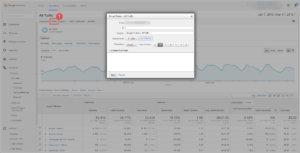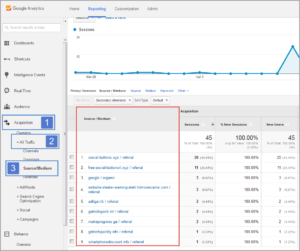 (This article was posted by Remodeler’s Advantage, and written specifically with the home improvement industry in mind. No matter what your industry is, though, this is helpful.)
(This article was posted by Remodeler’s Advantage, and written specifically with the home improvement industry in mind. No matter what your industry is, though, this is helpful.)
I’m willing to bet just about every person reading this blog post has Google Analytics installed and is tracking their website activity. But, I’ll also wager that practically none of you look at the data on a regular basis—let alone take action on it.
For the rare exceptions—the handful of you that review your Google Analytics data daily, weekly, or monthly—there’s a good chance you’re wasting your time. You’re wasting your time because, in its standard configuration, Google Analytics spits out some really misleading numbers.
Furthermore, it’s springtime. You’re busy. The last place you want to spend your time is inside in front of a computer analyzing website data. So, in this post, I’m going to give you a few tips for how to get more value from your Google Analytics data.
Tip 1: Get Your Data Delivered
For a lot of remodelers, the first challenge is finding the time to sit down at a computer. The second challenge is remembering how to access the 2-3 Analytics reports you looked at—and liked—last time you did this.
Did you know you can have Google Analytics reports delivered auto-magically to you? It’s true. Just about any report in Google Analytics can be emailed to you as often as you’d like.

Tip 2: Filter It
I give a lot of speeches to audiences filled with small-medium sized business owners. Whenever I ask an audience, “how much website traffic do you get in a month?” I often get a handful of proud business owners that respond, “I get 1,500 hits per month” or “I get 2,000 hits per month. Getting people to my site isn’t the problem. The problem is getting them to turn into good leads.”
You’ve probably heard the saying, “junk in, junk out.” Nowhere does it apply more than to Google Analytics.
What most business owners don’t understand is that the vast majority of their “2,000 hits” per month are garbage that falls into one of two categories:
- People located outside your target service area
- Google Analytics SPAM
Removing people outside your service area is obvious, but as others have suggested, it is often overlooked. Unless a large percentage of your typical clients spend half the year in Monaco, you should create a filter to remove traffic from this country—and others like it.
Google Analytics SPAM is disregarded partially because it’s a more recent problem and partially because it’s not as obvious. To see how much Google Analytics SPAM impacts your website traffic reports, do this:
- Go into your Google Analytics account
- Look at the left navigation menu on the page
- Click Audience > Acquisition > All Traffic > Source/Medium
If you see something like this, you’ve got a problem:

SPAM is often seen on Google analytics.
If you want to see exactly how to filter out SPAM, read this article which details how to remove SPAM from Google Analytics.
Tip 3: Create Goals
What do you really want prospects to do while they’re on your website? Do you want them to give you their email address? Do you want them to view your most recent projects and download your latest Look Book?
All of these actions can be tracked in Google Analytics. With a few upgrades, you can even see things like how many people called you after they were referred to your website by a site like Houzz.
If you’re truly serious about growing your business, I strongly recommend you create goals in Analytics and customize your account based on your business goals.
Conclusion
Every business owner I know has Google Analytics installed on their website. Most have never looked at the data. In one of Victoria’s recent posts, she wrote, “you don’t need a huge transformation in your remodeling business to see a huge transformation in the results you achieve.”
I love this because it’s also true for your marketing. The difference between good and great or even success and failure often comes down to the details. Take some time this year to make sure you’re tracking your website correctly. Review the data, and take action. Relatively small investments can yield major results.
Of course, I also believe that you should do what only you can do. I can’t build or remodel houses, but I can help you get better data and act on it.

Ben Landers
About Ben Landers
Ben Landers is the president of Blue Corona, a three-time Inc. 5000 Internet marketing company that helps remodelers transform their online presence resulting in increased authority, leads, and sales as well as raving fans.
